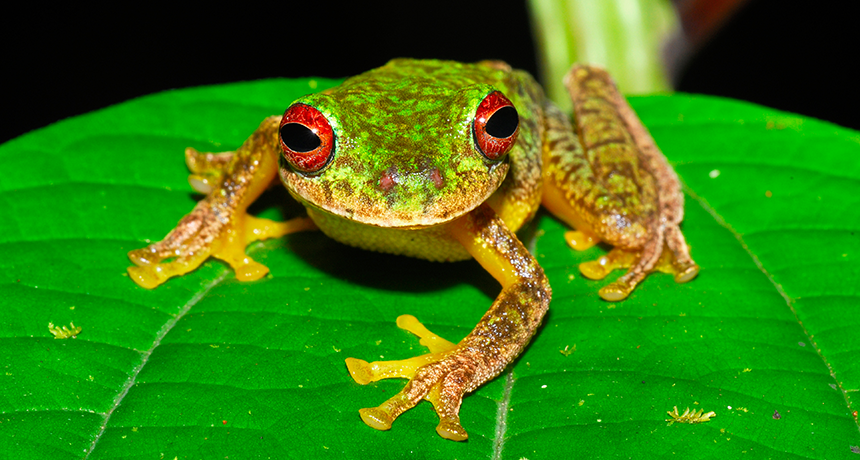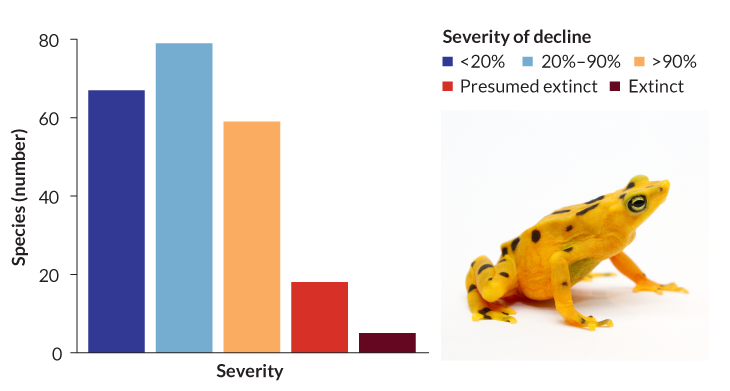amphibians A group of animals that includes frogs, salamanders and caecilians. Amphibians have backbones and can breathe through their skin. Unlike reptiles, birds and mammals, unborn or unhatched amphibians do not develop in a special protective sac called an amniotic sac.
chytrid fungus A common shortened name for fungi — Batrachochytrium dendrobatidis and B. salamandrivorans — that can create a lethal infection in amphibians, especially frogs. The formal name of the infection is chytridiomycosis.
extinct An adjective that describes a species for which there are no living members.
extinction The permanent loss of a species, family or larger group of organisms.
fungus (plural: fungi) One of a group of single- or multiple-celled organisms that reproduce via spores and feed on living or decaying organic matter. Examples include mold, yeasts and mushrooms.
infect To spread a disease from one organism to another. This usually involves introducing some sort of disease-causing germ to an individual.
journal (in science) A publication in which scientists share their research findings with experts (and sometimes even the public). Some journals publish papers from all fields of science, technology, engineering and math, while others are specific to a single subject. The best journals are peer-reviewed: They send all submitted articles to outside experts to be read and critiqued. The goal, here, is to prevent the publication of mistakes, fraud or sloppy work.
pathogen An organism that causes disease.
population (in biology) A group of individuals from the same species that lives in the same area.
species A group of similar organisms capable of producing offspring that can survive and reproduce.









